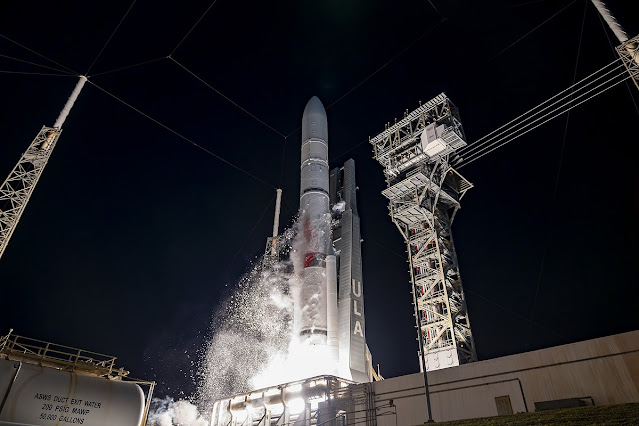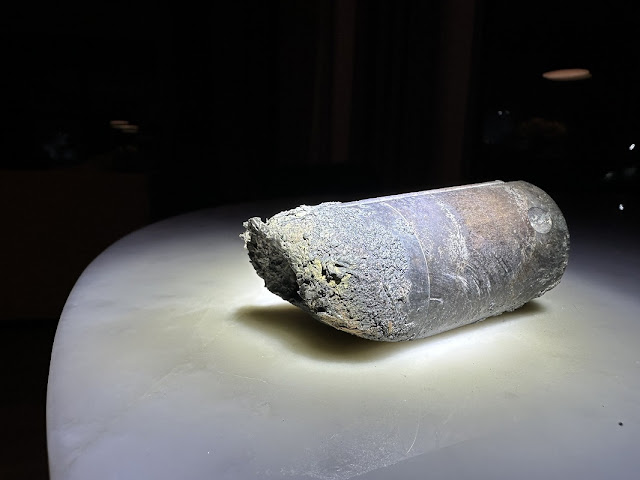Boeing's CST-100 Starliner Capsule was rolled to the launch pad today, April 16, and stacked on its Atlas V booster for its long-awaited Crewed Flight Test.
The spacecraft rolled out from Boeing’s Commercial Crew and Cargo Processing Facility at the Kennedy Space Center to Space Launch Complex 41 in the early morning hours April 16. The spacecraft was hoisted into place atop the Atlas 5 rocket in the Vertical Integration Facility building there later in the day.
The rollout is the latest milestone in preparations for the Crew Flight Test (CFT) mission, which will launch no earlier than the evening of May 6. NASA astronauts Butch Wilmore and Suni Williams will be on board, flying Starliner to the International Space Station. They will remain on the station for about eight days before boarding Starliner for a return to Earth, landing in the southwestern United States.
Launch is currently scheduled for May 6 at 10:34PM EDT. Next Spaceflight notes that this will be the first manned launch from a Cape Canaveral SFS launch pad since Apollo 7 in October 1968, and first ever launch of humans from SLC-41. (Need I point out there was no Space Force (as in SFS) in 1968?) All manned launches for the rest of the Apollo program, Skylab, the Shuttle and everybody launched from 1968 through the current crew rotation missions that resumed in 2020 have been from the Kennedy Space Center side.
As we've noted before, if the launch is delayed a day or two, the liftoff time will move earlier by about 23 minutes per day of delay (due to the Space Station's orbit).
The launch is 13 days short of exactly one year since the last flight of a Starliner, Orbital Flight Test 2, or OFT-2, on May 19, 2022. In terms of performance, OFT-2 was light years ahead of the first flight test, in December of '19. OFT-1 was so embarrassingly bad they were lucky to get the Starliner capsule back. Boeing's Starliner, like SpaceX's Crew Dragon, was bid as a firm, fixed price contract, and the delays due to their OFT-1 failures along with the many delays since then, have cost the company a lot. I've read as much as $1 billion.
At a March 22 briefing, Mark Nappi, vice president and program manager for Starliner at Boeing, said the key purpose of CFT is to see how spacecraft systems perform with a crew on board. “We flew OFT-2, and that was the uncrewed mission for the Starliner vehicle, and it was very successful. Now we introduce humans.”
Most of the flight test objectives, he said, are devoted to answering “does the vehicle perform with the human in the loop as expected?” That includes various environmental systems, control interfaces and the ability of the astronauts to take manual control of the spacecraft if needed.
A successful OFT-2 would allow NASA to certify Starliner for regular crew rotation flights, currently launched by SpaceX and Roscosmos in Russia. The first crew rotation using Starliner isn't likely until 2025 with a very successful test flight. The better the flight, the earlier in '25.
Boeing's CST-100 Starliner rolls out of its processing facility in the predawn hours of April 16. Image Credit: Boeing



















